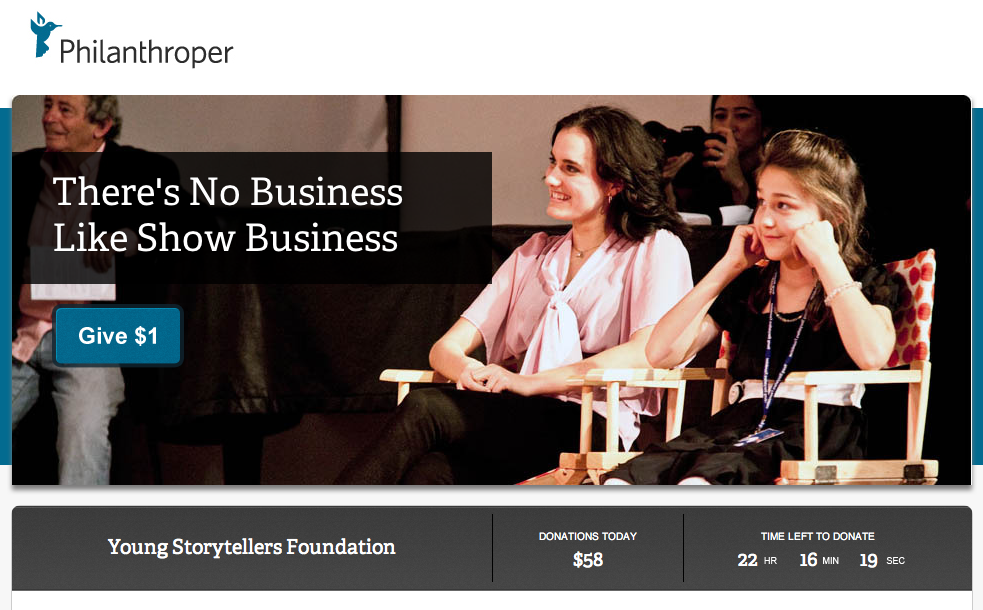Deep research presents the complexities underneath a system. This article provides an overview of a recent report that comprehensively examines the evolving landscape of philanthropy, particularly its profound effects on arts justification and data cultures. It delves into how the arts, traditionally seen as outside classical economic theories, have progressively become integrated into the economic sphere due to the rise of industrial foundations and government arts councils in the 20th century.
Crafting Grant Narratives - Approaches to Justifying Arts Funding
The grant narrative has become one of the most high-stakes tools of communication in the nonprofit fundraising space, driving more than $150 billion in global expenditures. As grant writers adapt their appeals in response to changing funder values, this narrative network gives shape to the nonprofit ecosystem in which many arts organizations operate.
Crypto Philanthropy: Opportunities and Considerations
Cryptocurrency has the potential to and is already beginning to disrupt philanthropy and the ways that nonprofit organizations collect donations. In previous eras, philanthropic innovation was spurred by “new sources of wealth,” as with John D. Rockefeller creating America’s first foundation or Bill and Melinda Gates translating his immense success in the tech revolution into global philanthropic influence in areas of “poverty, disease, and equity.” Similarly the emergence of a new class of “crypto-elite[s]” has the potential to disrupt traditional methods of philanthropy. Now, as blockchain technology and its myriad applications become more mainstream and our society becomes more crypto-curious, nonprofit organizations have an opportunity to adapt by incorporating cryptocurrency and its various tokens into their fundraising strategies.
Decentralized Patronage: Incentivizing Ethical and Effective Philanthropy of Crypto-Assets
Cryptocurrencies conjure up a variety of images. To some, they are shadowy currencies, born of vice and crawling out of the corners of the dark web to sew anarchy into the traditional financial system. To others, they are harbingers of a new wave of financial tools better suited to the digital age. This report analyzes the pathways, promises, and potential problems of crypto-assets within fundraising.
New Publication: Silicon Valley Struggle
In the 21st century, wealth is beginning to concentrate in new fields like technology as opposed to traditional industries. With this in mind, how can arts organizations go about soliciting financial support from this new class of wealthy-elite? This white paper by Jennifer Moreci answers this question by looking at current patterns in philanthropy and specific strategies for engaging donors in Silicon Valley. Read the full report here.
#TBT: A Guide to Web-Based Fundraising and Philanthropy
Web 2.0 has changed many aspects of the modern world, and fundraising and philanthropy is no exception. From the tidal wave of tech tycoons committing to the Giving Pledge to the rise of crowdfunding (and a bevy of potential platforms for a crowdfunder to choose from), soliciting essential funds has more avenues than ever--and more potential challenges along with them. This week's throwback rounds up numerous articles that provide time-tested wisdom on how to navigate in the new world of web-based fundraising and philanthropy.
How Socially Responsible Spending is Replacing Traditional Philanthropy
You would be hard pressed to find any person who has visited a grocery store or movie theater that has not been asked to donate an additional dollar for charity on top of their purchase. It’s become a widely accepted, near expected, practice in contemporary consumer culture. Capitalizing on existing buyer behavior is not just easy- it’s smart. However, the model has advanced far beyond adding a few dollars onto a popcorn purchase at the cinema. It has emerged as a way for organizations to capture financially strapped young donors, and generate creative revenue streams as traditional philanthropic avenues face increased competition.
The Giving Pledge: A Start to Engage Tech Philanthropy
To understand why arts organizations have struggled to capture funds from tech billionaires, arts managers and development professionals would do well to recognize what philanthropic sectors they are losing these dollars to, and why. Armed with these insights, arts professionals can then adjust their strategies to better appeal to this new and growing donor segment.
Tips for Choosing a Grants Management System: Part 2
Throughout the process of selecting and implementing a grants management system (GMS), an arts organization must consider many factors in order to ensure positive results. These factors fall into four main categories: vendor interviews, data migration, integration, and training. All of equal importance, these categories must be weighed to find the optimum balance of system features and vendor characteristics.
Today we focus on the last two categories—integration and training. To read the first part of this two-part series, click here.
Tips for Choosing a Grants Management System: Part 1
Throughout the process of selecting and implementing a grants management system (GMS), an arts organization must consider many factors in order to ensure positive results. These factors fall into four main categories: vendor interviews, data migration, integration, and training. All of equal importance, these categories must be weighed to find the optimum balance of system features and vendor characteristics.
Today we focus on the first two categories—vendor interviews and data migration.
National Satisfaction with GMS Software
Today, an administrator has the ability to manage the entire granting lifecycle through a grants management system (GMS), including applicant relations, panelist reviews, and fund distributions. Online storage available through cloud computing and software with fewer hardware requirements have increased GMS product capabilities. And the ability for a GMS to interact with other systems, such as payment portals and accounting systems, has further made management of the grant lifecycle within a GMS easier. For many of today’s grant-making organizations, GMS software is an essential tool in day-to-day activities.
Grants Management Systems: Primer for Best Practices, Part 4
State arts agencies need to report not only to NASAA and the NEA, but also to other entities, such as state legislatures and the general public. These reports communicate impact to all stakeholders within the agency and across its jurisdiction. A GMS’s querying and reporting capabilities impact how this information is accessed and, ultimately, understood.
Grants Management Systems: Primer for Best Practices, Part 3
With grants management systems, the whole application process can be done online. To accommodate the needs of a diverse pool of reviewers, the system should allow them to view each application online and to access and download each application in a printer-friendly format. Grants managers should take full advantage of GMS panel review features by incorporating funding formulas (weight and average calculations) to the evaluation forms that reviewers fill out and then having reviewers input their final scores into the system.
Grants Management Systems: Primer for Best Practices, Part 2
As data becomes increasingly necessary for art agency reporting requirements, great pressure exists among staff members to collect as much as possible, and as soon as possible. But collecting data without a clear purpose places a burden on the applicants that have to gather it and grant managers who need to interpret it.
Grants Management Systems: Primer for Best Practices, Part 1
In 2012, the nation’s 62 state and regional arts agencies distributed approximately $215 million in grant monies. Compare those figures to the nearly 82,000 grant-making foundations in the United States, which collectively distribute over $49 billion annually.
Assisting these arts agencies, foundations, and other money distributing bodies are grants management systems—automated systems that track a grant through its entire lifecycle, as well as store data for relationship management between the grantor and an applicant. Recognizing the complexity of grants management systems (GMS) and the relative lack of resources in the arts sector, best practices must be followed to achieve the maximum value of each dollar spent on a GMS.
Philanthroper: A New Daily Deal Site for Non-Profit Donations
 A new daily deal site launched this past month, but this site doesn’t offer a deal for a spa trip or half off dinner at some posh restaurant. New site Philanthroper offers a non-profit story a day, a daily solicitation for a non-profit doing some good, and asks visitors to give just one dollar. Launched by Mark Wilson, reporter for Gizmodo and Esquire, Philanthroper aims to make donating a daily habit for the internet culture.
The idea behind Philanthroper is very similar to dynamite daily deal sites like Groupon and Living Social. Each non-profit gets front-page realty on the site, but just for 24 hours. Instead of a daily discount, Philanthroper shares the stories of non-profits, from local to global, and gives visitors the opportunity to donate a dollar. When the 24 hours come to an end, a new non-profit goes up and the previous day’s organization receives their funds within about a week.
A new daily deal site launched this past month, but this site doesn’t offer a deal for a spa trip or half off dinner at some posh restaurant. New site Philanthroper offers a non-profit story a day, a daily solicitation for a non-profit doing some good, and asks visitors to give just one dollar. Launched by Mark Wilson, reporter for Gizmodo and Esquire, Philanthroper aims to make donating a daily habit for the internet culture.
The idea behind Philanthroper is very similar to dynamite daily deal sites like Groupon and Living Social. Each non-profit gets front-page realty on the site, but just for 24 hours. Instead of a daily discount, Philanthroper shares the stories of non-profits, from local to global, and gives visitors the opportunity to donate a dollar. When the 24 hours come to an end, a new non-profit goes up and the previous day’s organization receives their funds within about a week.
Why just a dollar? As the site states:
So you can donate another $1 tomorrow. And another the next day. Use Philanthroper daily, and we guarantee, you'll donate more over time than you would have otherwise plus it won't sting your bank account so badly. Use Philanthroper every day and you'll be on the right track to give more, more easily. If you're compelled to make a larger donation, fantastic. We always link their site. So go for it.
Philanthroper restricts the amount you can donate to just that one dollar and limits visitors from donating more than once a day. The idea here isn’t to solicit a major gift, but to create a culture of daily giving. Donating a single dollar can be a pretty tempting request. Personally, I spend more on a cup of coffee or downloading an app that will make my phone sound like an air raid siren.
The financial cut Philanthroper takes from each donation is the biggest thing setting them apart from other crowdfunding sites like Kickstarter and USA Projects. That’s because the amount Philanthroper retains is zero – you read that right, zero. Philanthroper states right out that they will never take a cut of your donation, although the site’s payment service mPayy will take a whopping 1% of each donation – a penny.

This is how Philanthroper can offer that minimum donation level of $1, whereas other non-profits are often forced to ask for a minimum of around $10 due to the processing rates of current payment services. Support for the site comes from advertising, so as website Arstechnica puts it “…only your eyeballs, and not your charitable gifts, are paying to keep things going.”
How does a non-profit get a daily deal? The site selects only official 501(c)3 organizations, with a special interest in those that bring in less than $1 million per year. The main focus is on those non-profits that are young and growing and could use every single extra dollar. Religious non-profits are not promoted on the site and individuals raising funds will not make the cut. Think you know a non-profit that’s perfect for the site? Philanthroper invites site visitors to suggest tips for non-profits out there worthy of their own daily deal.
Creating a habit of daily giving in our current internet culture is a pretty exciting idea. Philanthroper is taking advantage of the impulsive nature of users of sites like Groupon and Living Social. If the popularity of the site can continue to grow, there is a possibility to make a huge difference for many small non-profits. Visit the main site here and check out what today’s daily cause is that you can throw a dollar towards.




















